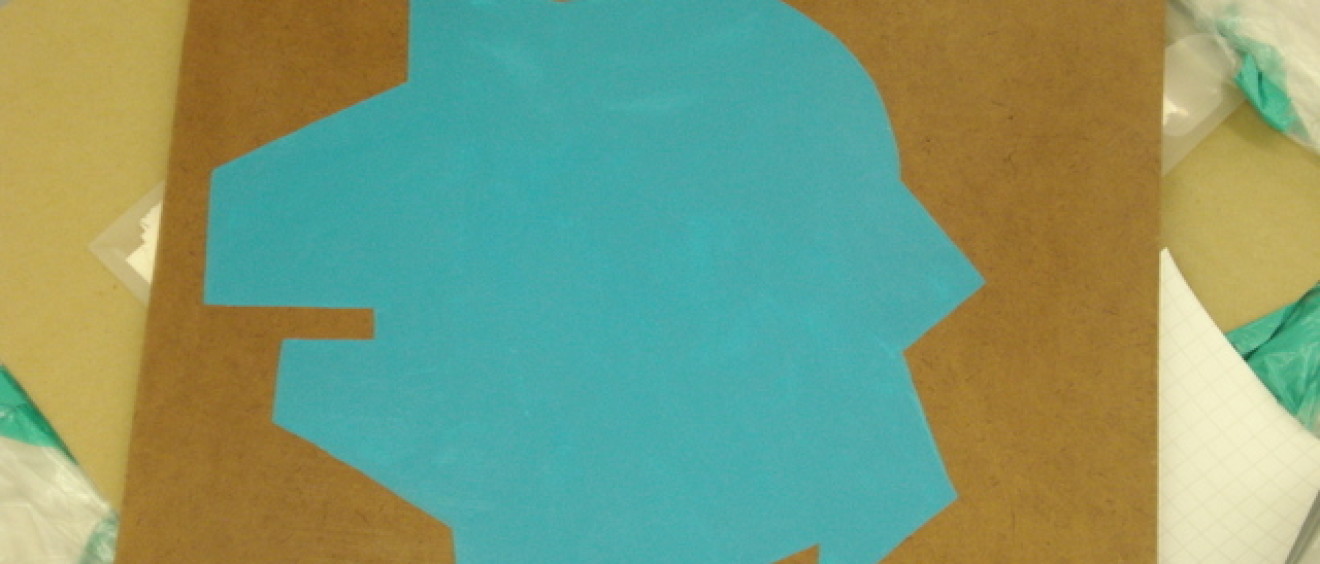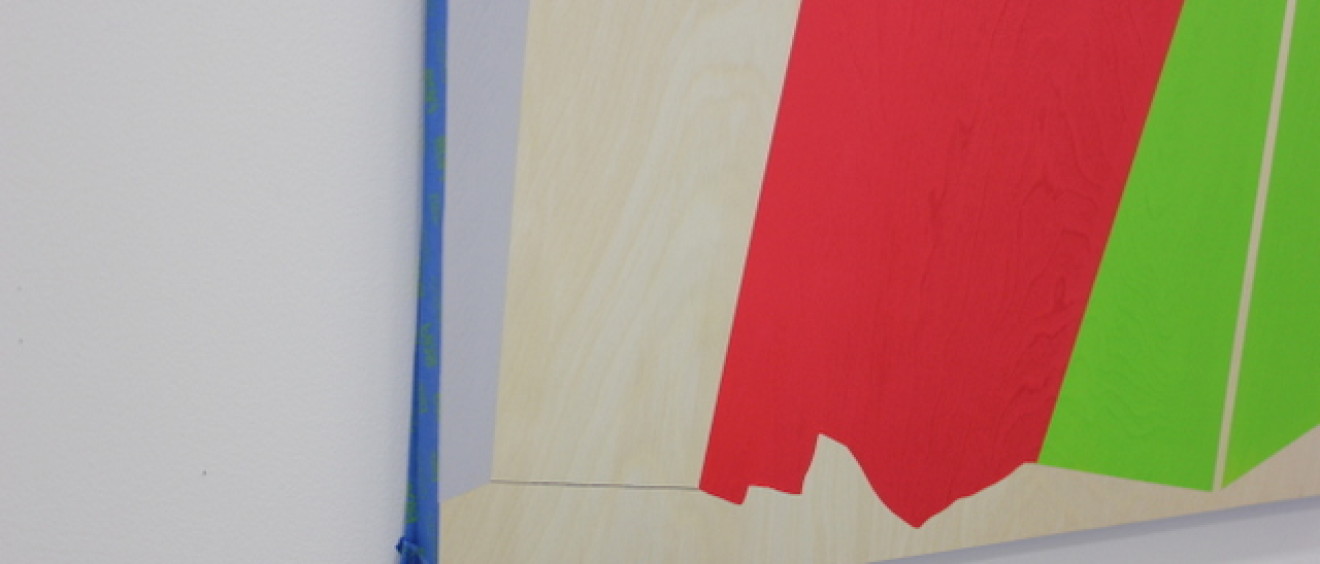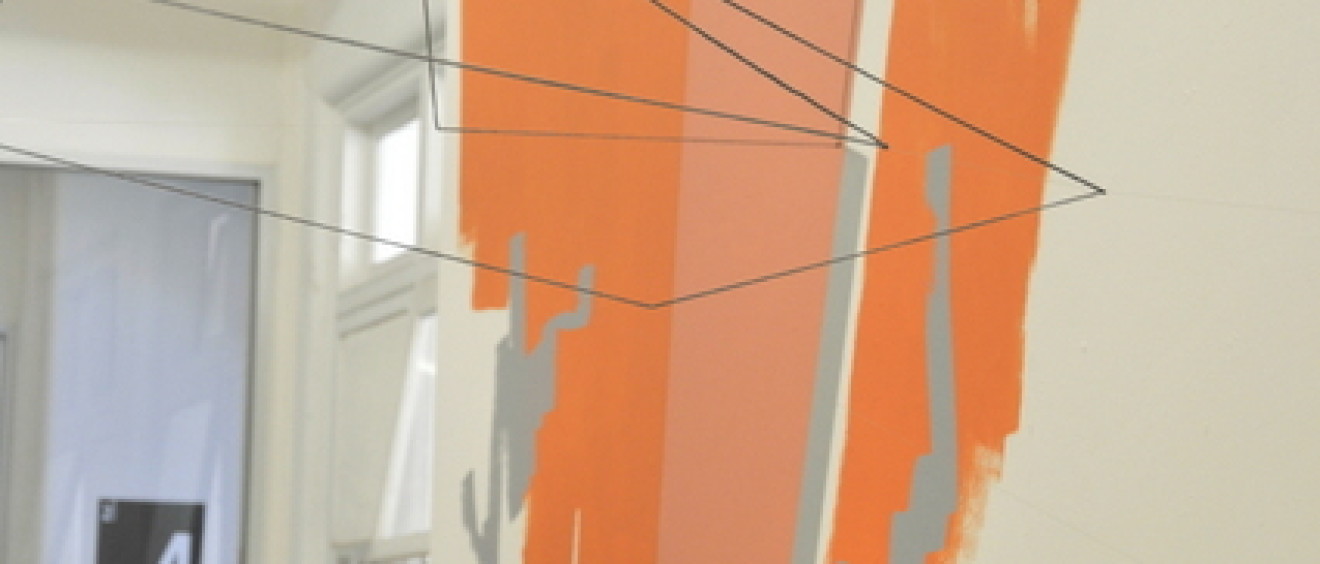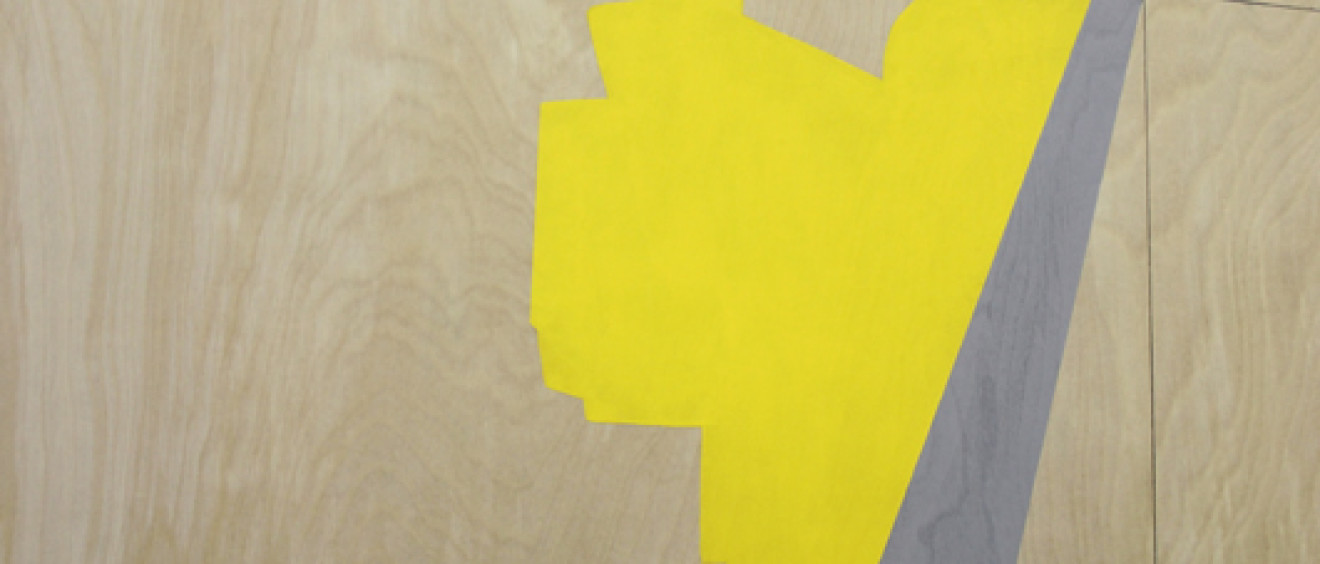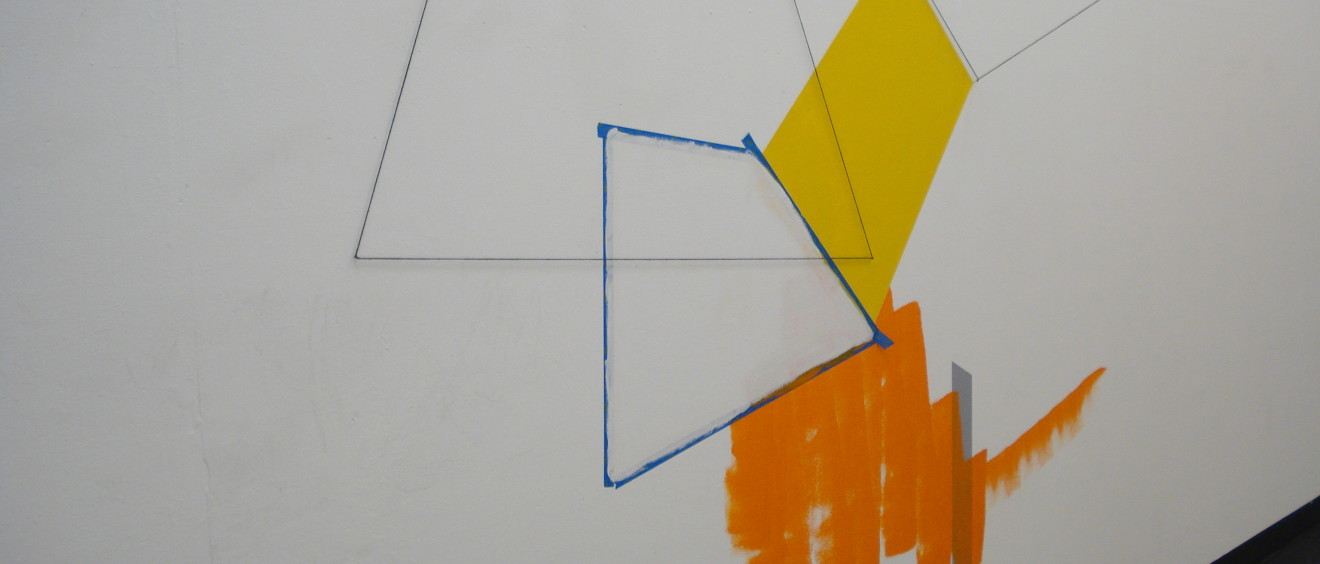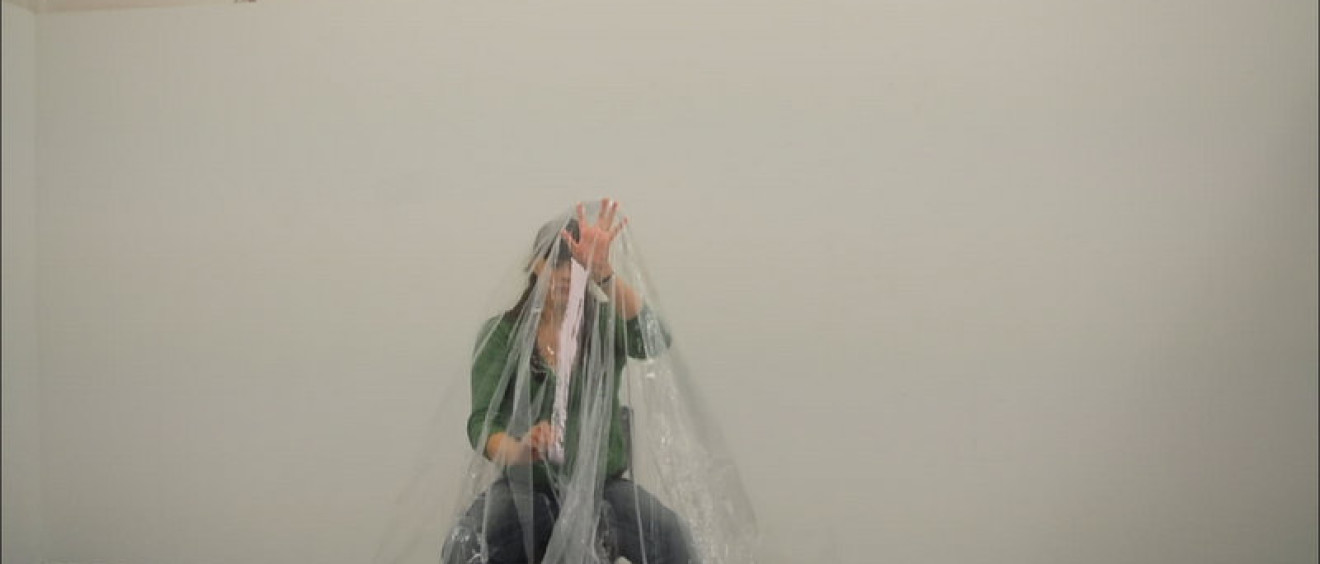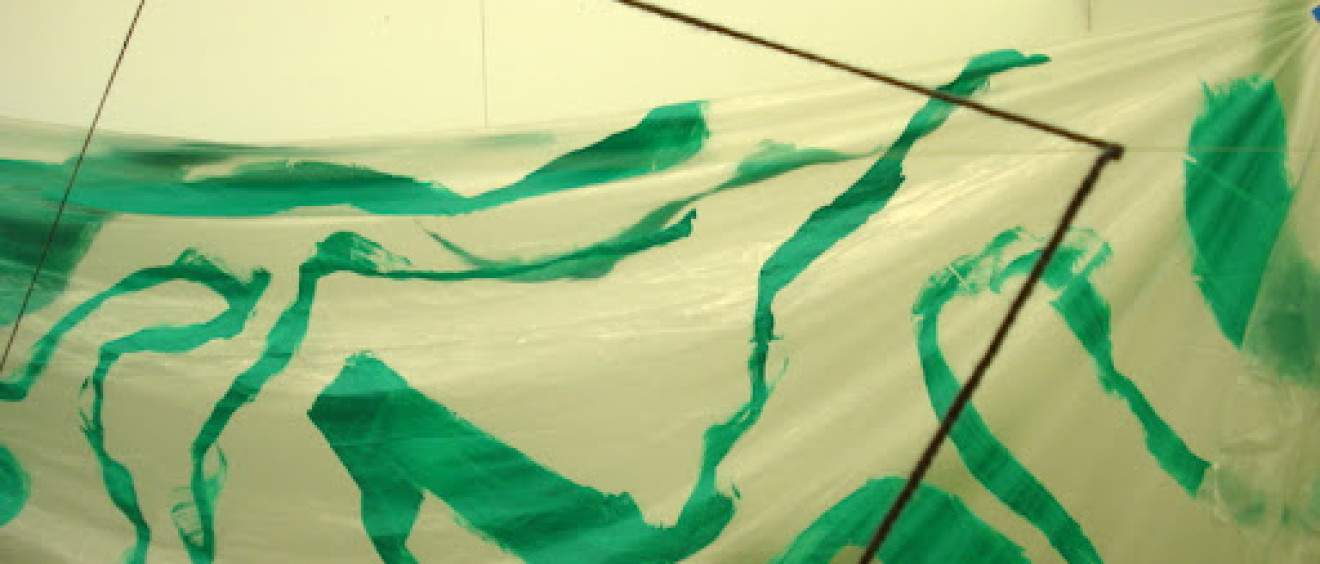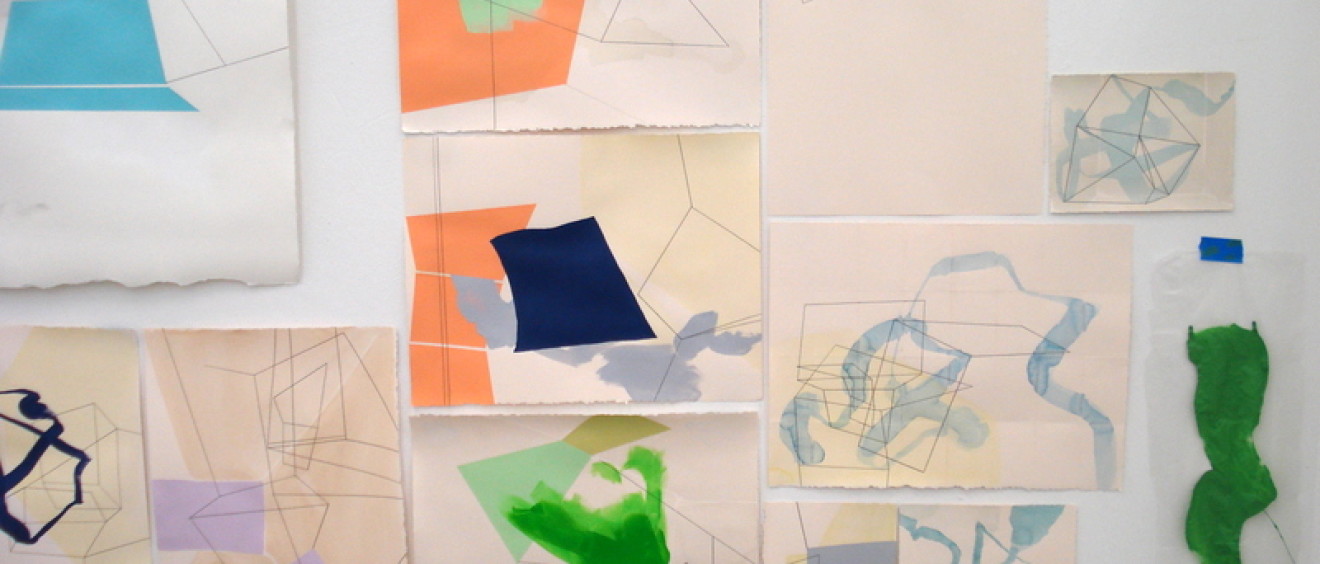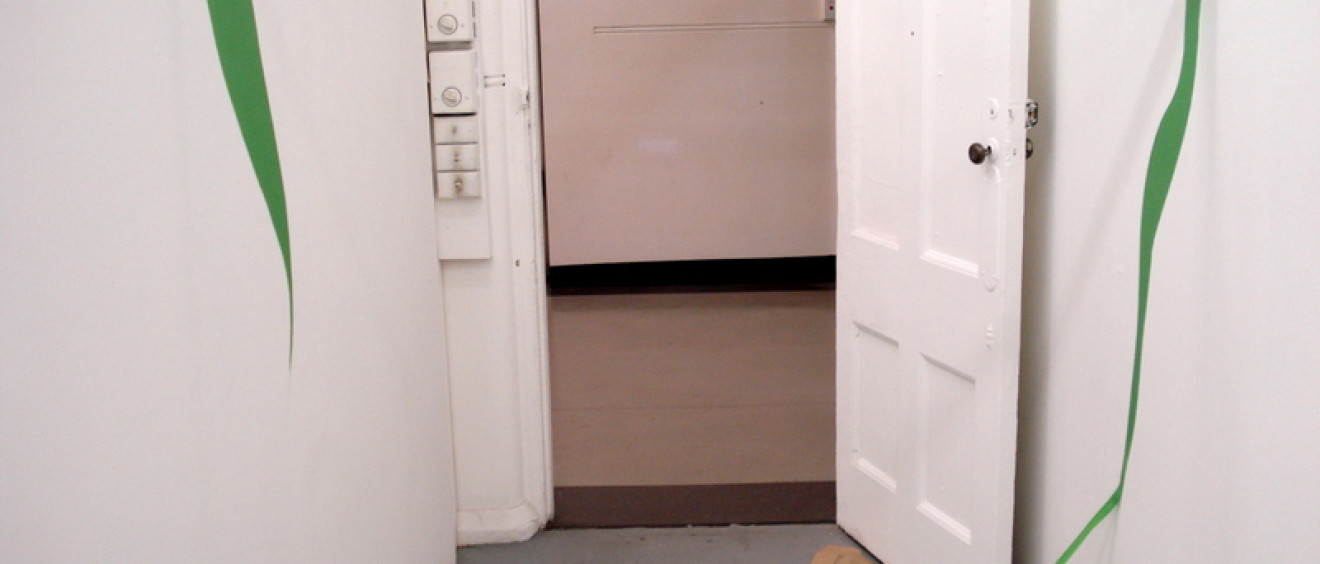Incrementally throughout my recent works on wooden boards I have been experimenting with random and deliberate brush marks. When you paint something, like a house or a piece of furniture, you use brush marks in such a way as to get good coverage but it’s also quite random. Noticing this in my own work, I have sought to be more deliberate in my use of this. (It’s a further development in what I was trying to get at with other tests with brush strokes.)
It started appearing in various tests. And I wanted to take that randomness and try and use it in my work.
I used it alongside straight edged shapes, trying to figure out in what capacity it could fit into my work. But didn’t feel really attached to the rough a scumbly edges.
I started to fill in with a sharp edge the shapes the brush marks created.
Suddenly, these wonky shapes started appearing amongst the straight edged ones.
These were still random and deliberate shapes that were part of a line of unfolding architectural shapes (as above). But I also started to play with the shapes as their own beast.
These are still tests. I haven’t made any resolved works out of them, but they are good to have cooking along in the background. I feel they still have a very strong relationship to architecture and space. So I expect there will be more of these, perhaps in a wall installation capacity.

